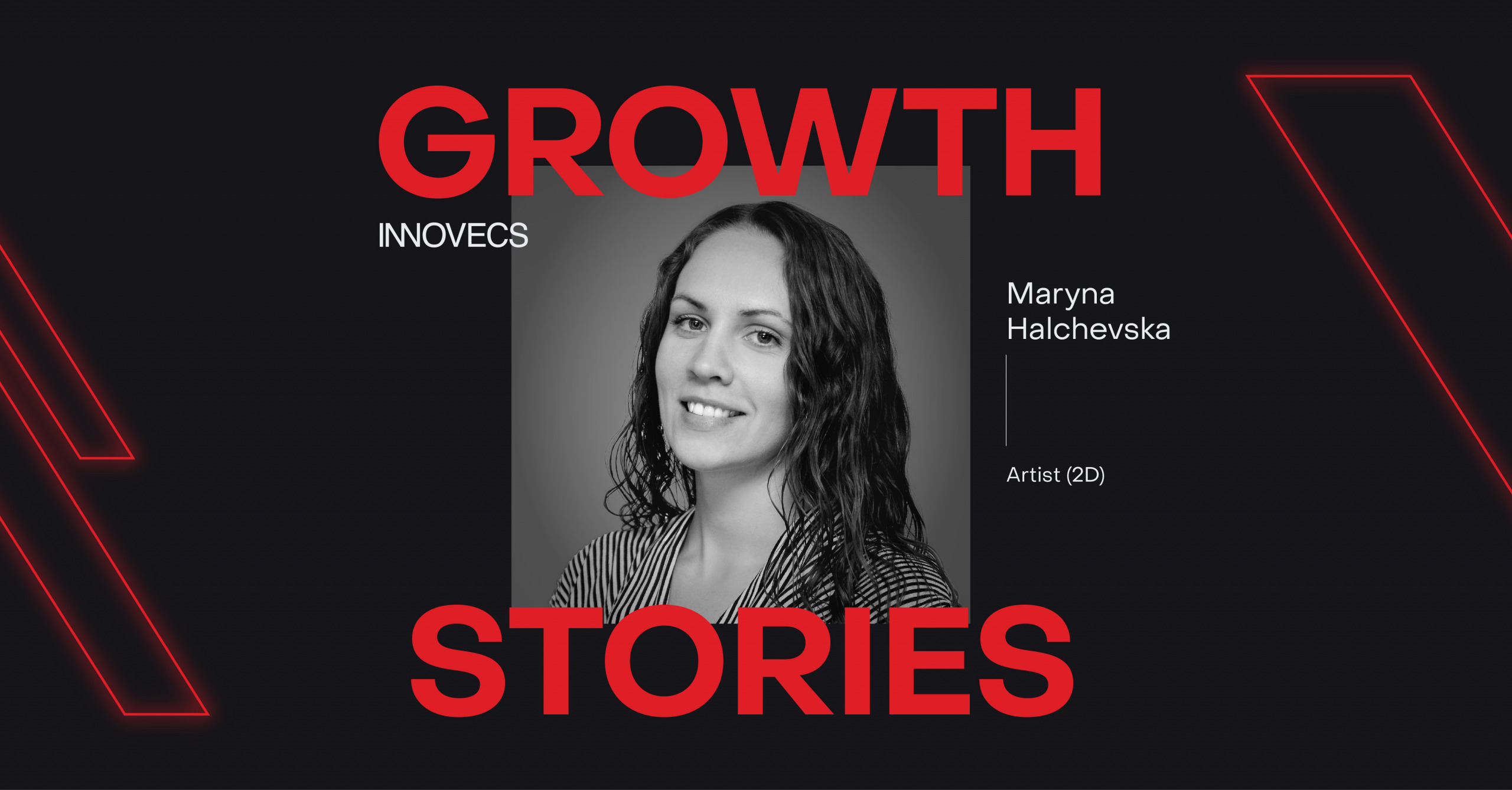My name is Nataliia Horova, and I continue to share the inspiring stories of our teammates. Today, I’d like to introduce you to Maryna Halchevska, an Artist (2D) at Innovecs.
This fall, Maryna celebrated a milestone — 6 years at Innovecs. I invited Maryna for a talk to discover how her world and work at Innovecs changed during this time.
Drawing sketches
While studying interior design at university, I entered the captivating world of computer graphics. This discovery was a turning point for me. I was fascinated by the high-quality rendering capabilities and soon found myself lost in Photoshop, experimenting with various brushes. Whole days would slip by as I sat glued to my computer (laughing).
In those days, information on computer graphics wasn’t as available as it is now. Alongside my university courses, I delved into self-learning, absorbing everything I could about drawing, painting, graphic design, and computer graphics. I even took 3D Max courses.
I started learning with text tutorials, gradually moving to video tutorials as they became available. After graduating, I entered the professional world of web design right at the peak of the popularity of Skeuomorphism, with its complex detailing and textures.
Celebrating 6 years with Innovecs
This autumn, I celebrated a significant milestone: 6 years at Innovecs. Through this journey, much has evolved, yet some things remain constant: a fantastic team and an unwavering desire to grow, learn, and provide clear, constructive feedback.
I started my art journey with just four of us on the team. It’s been quite a ride since then, with our group growing so much that I’ve lost count! As our team expanded, I stepped up to become a Lead artist of one of the projects.


